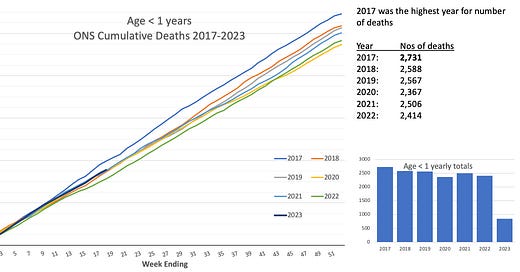Today, we start our series with the data on deaths in small children (<1s), presenting data for 2017-2023 based on ONS data on deaths registered weekly in England and Wales.
AGE GROUP < 1 yrs (Infants)
2020 saw 2,367 deaths in under one year olds: the lowest number of infant and child deaths since records began in 1980.
However, the data is affected by the…





